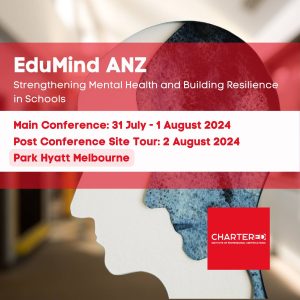Young people are still being impacted by the COVID-19 pandemic, with a new report revealing a continuing ripple effect.
A report published by the Centre for Youth Policy and Education Practice (CYPEP), based in the Faculty of Education at Monash University has found that young people’s social, economic, psychological and political positions are still being affected by the global pandemic.
The Pandemic Years and Their Impact on Young People in New South Wales and Victoria report conducted a nationally representative survey of over 1500 young Australians aged 18-24 and interviews, with a further 90 young people, from 2021 to 2023.
The key findings of the report include:
Housing
- Increasing proportions of young people in both states think that affordable housing options for young people need immediate action, from 59.1 per cent in 2022 to 69.6 per cent in 2023 in NSW and from 63.6 per cent in 2022 to 67.8 per cent in 2023 in Victoria. Both states had lower proportions than the national average of 70.1 per cent in 2023.
- The proportion of young people who believed that there was not enough or barely enough government support for housing increased moderately from 55.9 per cent in 2022 to 63.8 per cent in 2023 in NSW, while it decreased slightly from 62.5 per cent in 2022 to 59.3 per cent in 2023 in Victoria. Both states are lower than the national average of 65.7 per cent in 2023.
Finances
- Majority of young people surveyed experienced financial difficulties in both states over the three years. An increasing proportion of young people who experienced financial difficulties in NSW, from 75.4 per cent in 2021 to 91.6 per cent in 2023, while it fluctuates in VIC: 83.7 per cent in 2021, 95.6 per cent in 2022, and 85.5 per cent in 2023. The national average is 90.4 per cent in 2023.
- An increasing proportion of young people in both states reported that young people today would be financially worse off than their parents, from 54 per cent in 2021 to 58.3 per cent in 2023 in NSW and from 56.2 per cent in 2021 to 62.5 per cent in 2023 in Victoria. The national average is 61.3 per cent in 2023.
- An increasing proportion (55.2 per cent) of young people in NSW believed there was not enough or barely enough financial support for young people. This is compared with a decreasing proportion in Victoria (50.6 per cent in 2023). The national average is 56.3 per cent in 2023.
Mental Health
- Over 20 per cent of young people (20.7 per cent in NSW, 31.1 per cent in Victoria, national average of 24.3 per cent) received mental health support in 2023, though the proportion decreased in NSW and fluctuated in Victoria.
- More than 40 per cent of young people reported there was not enough or barely enough government support for mental health. The proportion increased from 43.6 per cent in 2022 to 45.9 per cent in 2023 in NSW and decreased from 45.1 per cent in 2022 to 42.5 per cent in 2023 in Victoria, lower than the national average of 51.1 per cent in 2023.
Relationships
- From 2021 to 2023, young people in both states became less optimistic about their relationships in the future, including living in a long-term relationship (52.6 per cent in NSW, 55.6 per cent in Victoria, national average of 53.6 per cent in 2023), having a child/children (46.8 per cent in NSW, 50.1 per cent in Victoria, and national average of 46.7 per cent in 2023), and having a supportive social network around them (53.2 per cent in NSW, 60.9 per cent in Victoria, and national average of 55.7 per cent in 2023).
Employment
- Increasing proportions of young people in both states thought that employment opportunities for young people need immediate action, from 47.4 per cent in 2022 to 48.7 per cent in 2023 in NSW and from 47.1 per cent in 2022 to 48.6 per cent in 2023 in Victoria. Both states are lower than the national average of 50.6 per cent in 2023.
Education
- The proportion of young people who often or very often felt they belonged at their school/educational institution decreased from 41.8 per cent in 2022 to 37.4 per cent in 2023 in NSW, while it increased from 39.3 per cent in 2022 to 41.7 per cent in 2023 in Victoria. Both states are higher than the national average of 36.9 per cent in 2023.
Conditions are worsening for some
The report was authored by Dr Zihong Deng, Professor Lucas Walsh, Dr Thuc Bao Huynh, and Blake Cutler. Overall, the findings highlight that many areas of young people’s lives in NSW and Victoria continue to be impacted by the COVID-19 pandemic, with young people reporting worsening conditions in some key areas, especially financial situations.
“This report documents young lives during the pandemic, which isn’t over. Aside from continuing infections, many young people living in the two states that experienced the most serious lockdowns have been affected and scarred. The ripple effect, which is social, economic, psychological and political, is likely to shape, if not transform, a generation,” says co-author of the report and director of the Monash Centre for Youth Policy and Education Practice (CYPEP) based in the Faculty of Education, Professor Lucas Walsh.
He told EducationDaily that “the rates of teenagers finishing school has been declining and school attendance has been severely affected since pandemic lockdowns”.
“Participation in bachelor’s degrees has also been declining, says Professor Walsh.
“More are seeking work rather than pursuing further study or training, particularly those from lower socioeconomic backgrounds,” he told EducationDaily.
Overcoming education disruptions
Lead-author Dr Zihong Deng says young people have been both directly and indirectly impacted by the COVID-19 pandemic.
“In terms of direct impact, young people faced disruptions in their education and employment due to lockdowns and other control measures. But the effects, post-lockdown, continue,” says Dr Deng.
“The pandemic has exacerbated young people’s pre-existing concerns and interconnected challenges, across education, work, housing, finance and life in general. All these are negatively associated with young people’s health and wellbeing. Issues in health and wellbeing may limit young people’s opportunities for development and achievement.”
In 2023, 97 per cent of 18-24 year old Australians expressed anxiety, worry and pessimism about the future, Professor Walsh told EducationDaily.
“Wider research suggests their top concerns include mental health, employment, housing, and responding to climate change. Many are taking action to address some of these (particularly climate change).”
Viewing the future with “dark optimism”
Despite this increased negativity about the world in general, Professor Walsh says “most young people are hopeful but express a dark optimism about their futures”.
Both families and educators can do more to help support the young people look ahead with more certainty and positivity.
“Families/educators need to be more knowledgeable about the changing and uncertain labour market and how best to support their career choices and the anxieties accompanying making those choices,” Professor Walsh told EducationDaily.
“Careers education and mental health support need to be a priority.”








